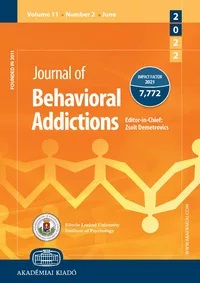Gender differences in the association of psychological distress and sexual compulsivity before and during the COVID-19 pandemic
Gender differences in the association of psychological distress and sexual compulsivity before and during the COVID-19 pandemic
Author(s): Laura I. Kürbitz, Christian Wiessner, Wiebke Schoon, Peer Briken, Daniel Schöttle, Johanna SchröderSubject(s): Behaviorism
Published by: Akadémiai Kiadó
Keywords: COVID-19; psychological distress; sexual compulsivity
Summary/Abstract: The COVID-19 pandemic had numerous consequences for general, mental and sexual health. As gender differences in sexual compulsivity (SC) have been reported in the past and SC has been connected to adverse events and psychological distress, the current study aims at investigating associations between these factors in the context of contact restrictions in the course of the COVID-19 pandemic in Germany. Methods. We collected data for five time points in four retrospective measurement points in an online convenience sample (n T0 = 399, n T4 = 77). We investigated the influence of gender, several pandemic-related psychosocial circumstances, sensation seeking (Brief Sensation Seeking Scale), and psychological distress (Patient-Health-Questionnaire-4) on the change of SC (measured with an adapted version of the Yale-Brown Obsessive Compulsive Scale) between T0 and T1 (n = 292) in a linear regression analysis. Additionally, the course of SC over the time of the pandemic was explored with a linear mixed model. Results. Male gender was associated with higher SC compared to female gender over all measurement points. An older age, being in a relationship, having a place to retreat was associated with a change to lower SC during the first time of the pandemic. Psychological distress was associated with SC in men, but not in women. Men, who reported an increase of psychological distress were also more likely to report an increase of SC. Discussion. The results demonstrate that psychological distress seems to correlate with SC differently for men and women. This could be due to different excitatory and inhibitory influences on men and women during the pandemic. Furthermore, the results demonstrate the impact of pandemic related psychosocial circumstances in the times of contact restrictions.
Journal: Journal of Behavioral Addictions
- Issue Year: 11/2022
- Issue No: 2
- Page Range: 533-543
- Page Count: 11
- Language: English

